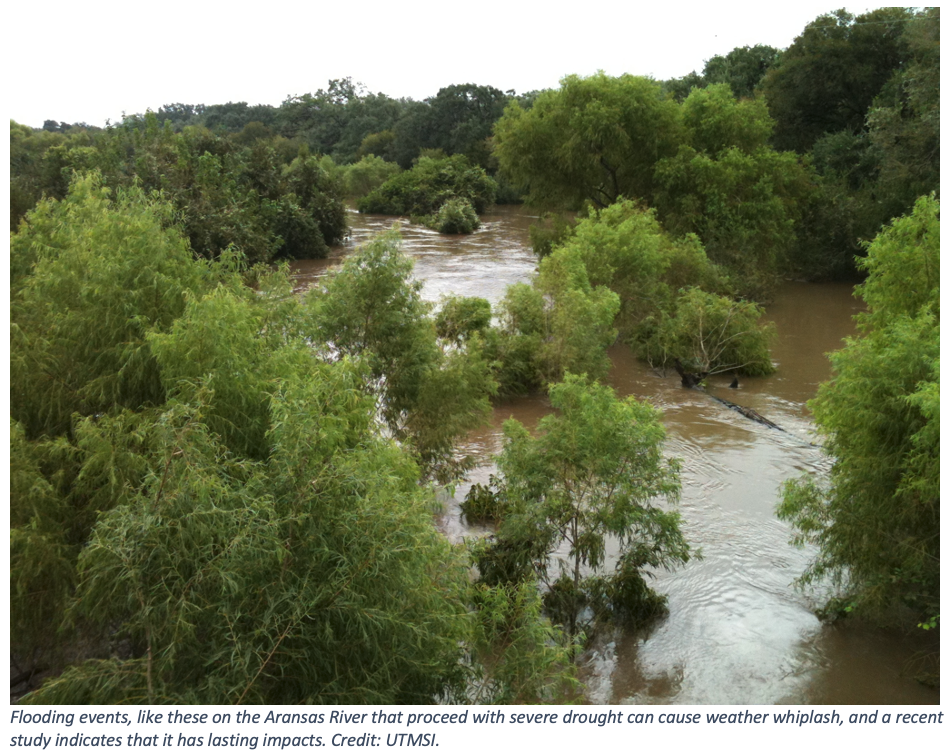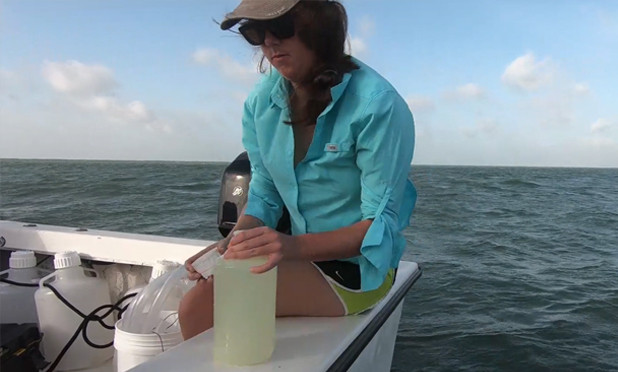 Estuaries are no strangers to changing rainfall conditions, and climate forecasts indicate that the pace and magnitude of change will continue to increase. A snapshot of the future for estuaries is available in a newly released study in Limnology and Oceanography. The study analyzed a long-term data set over an 8-year timescale that spanned a 5-year drought followed by severe flooding and a category 4 Hurricane. These drastic changes caused several lasting effects on primary production, phytoplankton composition, and organic matter cycling.
Estuaries are no strangers to changing rainfall conditions, and climate forecasts indicate that the pace and magnitude of change will continue to increase. A snapshot of the future for estuaries is available in a newly released study in Limnology and Oceanography. The study analyzed a long-term data set over an 8-year timescale that spanned a 5-year drought followed by severe flooding and a category 4 Hurricane. These drastic changes caused several lasting effects on primary production, phytoplankton composition, and organic matter cycling.
It is rare to have a data set of the breadth and duration that the study’s authors provide and even rarer still to have data in an estuary that has already experienced drastic changes in wet and dry cycles with a major tropical storm disturbance. The severe shifts are what climate forecasters predict is in store for the world’s estuaries. Using an 8-yr bimonthly sample set (2012–2019), the authors from The University of Texas Marine Science Institute and Virginia Institute of Marine Science evaluated particulate organic carbon, chlorophyll a, nutrient concentrations, and accessory pigments to characterize the response of the phytoplankton community to these climate events.
They found that phytoplankton biomass was much lower during severe drought than that during prolonged wet conditions. The phytoplankton community switched from being diatom-dominated during drought to cyanobacteria-dominated following estuarine freshening, driven by lower salinity and increased nutrient availability. In addition, the transition of the communities from diatoms to cyanobacteria was not a single disturbance but rather a whole community shift to a new quasi-steady state. This community shift to a cyano-dominated one will likely significantly impact the food chain and overall ecosystem. How the ecosystem will respond to the quasi-steady state remains to be seen, but it could be the new normal.
The study was completed by Drs. Sarah Douglas, Jianhong Xue, and Zhanfei Liu with the University of Texas Marine Science Institute and Dr. Amber Hardison with the Virginia Institute of Marine Science with funding support from the Texas Sea Grant and the National Science Foundation Chemical Oceanography Rapid Response Research program.










